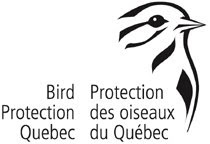Saturday, November - 1 samedi 1 novembre
Location: Centre d'interprétation de la nature du lac Boivin (CINLB), Granby
Leader: Sheldon Harvey 450-462-1459 /Cell # on Saturday morning 514-637-2141
Centre d'Interprétation de la Nature du Lac Boivin webpage: http://cinlb.org/
DRIVING INSTRUCTIONS: From the Champlain Bridge, follow the Eastern Townships Autoroute (Hwy 10) to Exit 68. Turn right off the exit on to boul. Daniel Bouchard (Hwy 139). Follow boul. Daniel Bouchard into Granby, crossing Hwy 112 and continuing past Granby Zoo. Continue on boul. Daniel Bouchard to the intersection with rue Drummond. Turn right on to rue Drummond. The free parking for the CINLB will be on your left. This site is approximately 75 minutes from the South Shore side ofChamplain Bridge.
This is a walking trip, with extensive trails throughout the park and an observation tower overlooking Lac Boivin. The park offers a variety of habitats including the lake itself, wooded trails and areas of open fields and brushy areas. There should be a good selection of species, including migrating songbirds, ducks, geese and, hopefully, a few surprises. Bring along some bird seed as the chickadees, white-breasted and red-breasted nuthatches are very friendly here and always looking to feed from the hands of the visitors. Half day.
8h00 Rendez-vous dans le stationnement du CINLB, 700 rue Drummond, Granby, Québec
Centre d'Interprétation de la Nature du Lac Boivin page: http://cinlb.org/
DIRECTIONS: A partir du pont Champlain, suivez l'autoroute des Cantons de l'Est (autoroute 10) jusqu'à la sortie 68. Tourner à droite après la sortie sur le boulevard Daniel Bouchard (route 139). Suivez le boulevard Daniel Bouchard dans Granby, en traversant la route 112 et continuer jusqu'à dépasser le Zoo de Granby. Continuer sur le boul. Daniel Bouchard jusqu'à l'intersection avec la rue Drummond. Tourner à droite sur la rue Drummond. Le parking gratuit pour le CINLB sera sur votre gauche. Ce site est situé à 75 minutes de la rive sud du pont Champlain.
Il s'agit d'une excursion à pied, sur les sentiers qui sillonnent le vaste parc et a destination d'une tour d'observation surplombant le lac Boivin. Le parc offre une variété d'habitats, y compris le lac lui-mème, des sentiers boisés et des zones de champs ouverts et des zones broussailleuses. On devrait y trouver une bonne sélection d'espèces, y compris les oiseaux chanteurs migrateurs, canards, oies et, espérons-le, quelques surprises. Apportez quelques graines pour les oiseaux qui comme les mésanges, les sitelles à poitrine blanche et à poitrine rousse sont trés peu farouches et cherchent toujours à la recherche à se nourrir dans les mains des visiteurs! Demi-journée.




